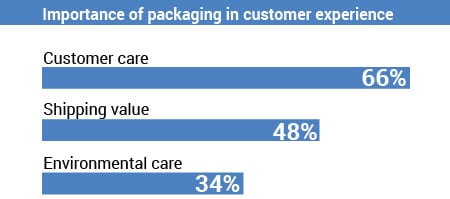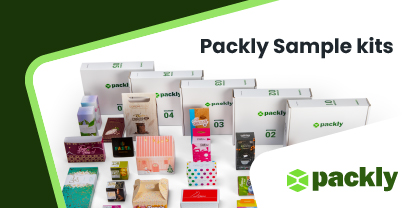Online business has been growing for many years, and more and more companies are opening up to digital sales channels. This means that companies and/or entities that have not yet adapted to this trend, in order to be competitive, must evolve and embrace new organizational models and strategies. Even packaging, as a marketing and communication tool, will not be exempt from such evolution.
Many business entities need to have a packaging designed especially for online sales, and just as many are the needs that push them to require such personalized packaging. Ranging from traders who buy in stock to manufacturers of hand-made items (for example: soaps, fashion accessories, jewelry, etc.); from companies who buy different products from multiple vendors and want to create boxes containing kits (for example: keyboard and mouse, tweezers and nail files, etc.) to companies that sell software on physical media: all of these realities require a custom packaging.
Packaging for e-commerce has a role that, in some respects, is different from that of packaging designed for sales in physical stores. Customers, in fact, will be able to hold the box in their hands only after purchasing the product and receiving the shipment. When designing packaging for online sales, we suggest the following guidelines:
Enhance the user experience
Make it easier to open the packaging by providing information on the assembly or installation (if necessary) or proper use of the product. Highlight contact information for customer support: telephone number, e-mail or website that the customer can contact to solve issues.
Engage the customer
Do not simply create a positive experience for the final user, but try to go one step further. Enhance the product contained in the packaging and find a way to thrill the customer with a “wow effect” in order to increase the value of the brand.
According to research conducted by the company Sealed Air, the packaging quality boosts the perceived value of the product and communicates the importance that the manufacturer gives to its customers.

Chart #1 – Two respondents out of three think that packaging is an indicator of the importance that companies give to their customers.

Chart #2 – % representation of the age groups for which packaging enhances the perception of value.
Communicate brand identity
Packaging designed for e-commerce must be able to communicate the brand identity, differentiate the brand and make it immediately recognizable. The company name, logo and clearly identifiable color scheme must be recognizable in a few seconds, even among the parcels watiting to be delivered by the courier (a sort of “traveling” advertising).
Products purchased on the web are normally shipped using two packagings: an internal and an external one. Although the external packaging is usually underestimated, we believe that a perfect and powerful match is the combination of a secondary packaging (external), that can facilitate brand recognition, and a primary packaging (in direct contact with the product), that can best communicate the features, specificity and uniqueness of the product.
A company that – among others that operate in the online market – has promoted packaging to one of its distinguishing features to achieve a competitive advantage is certainly Amazon.
Increase loyalty and sales
The packaging of a product is usually kept for much longer than a promotional flyer found inside the box, that usually attracts little attention from customers, especially when they are anxious to open the box and finally use the long-awaited product.
A winning strategy may be that of seeing the packaging as a sort of media that is present in homes and offices for long periods of time. Thus, the packaging of the product becomes an additional means of communication that can, for example, suggest the purchase of accessories or offer discounts, promotions and special conditions. Once again, packaging proves to be a powerful tool capable of increasing revenues and customer loyalty.
Protect products
Products that are sold online are delivered by shipping companies and, therefore, are at an increased risk of rupture. You can protect the products more effectively by using, for example, honeycomb panels in the packaging to shield the product and, of course, combine primary and secondary packaging to reduce the chance of accidental damage.
According to the previously mentioned study, 69% of respondents think that the courier and the selling company are both responsible for any damage sustained by the product ordered online. 38% of consumers who received a damaged product evaluated a purchase on the websites of several competitors before purchasing again from the same seller, and 20% never ordered again from the same site.
Conclusions
To be competitive in the online marketplace as well, companies must distinguish themselves and evolve. Packaging is a powerful differentiation tool and, if used properly for online sales, it can give a competitive advantage in terms of communication and branding and also increase sales and brand loyalty.













